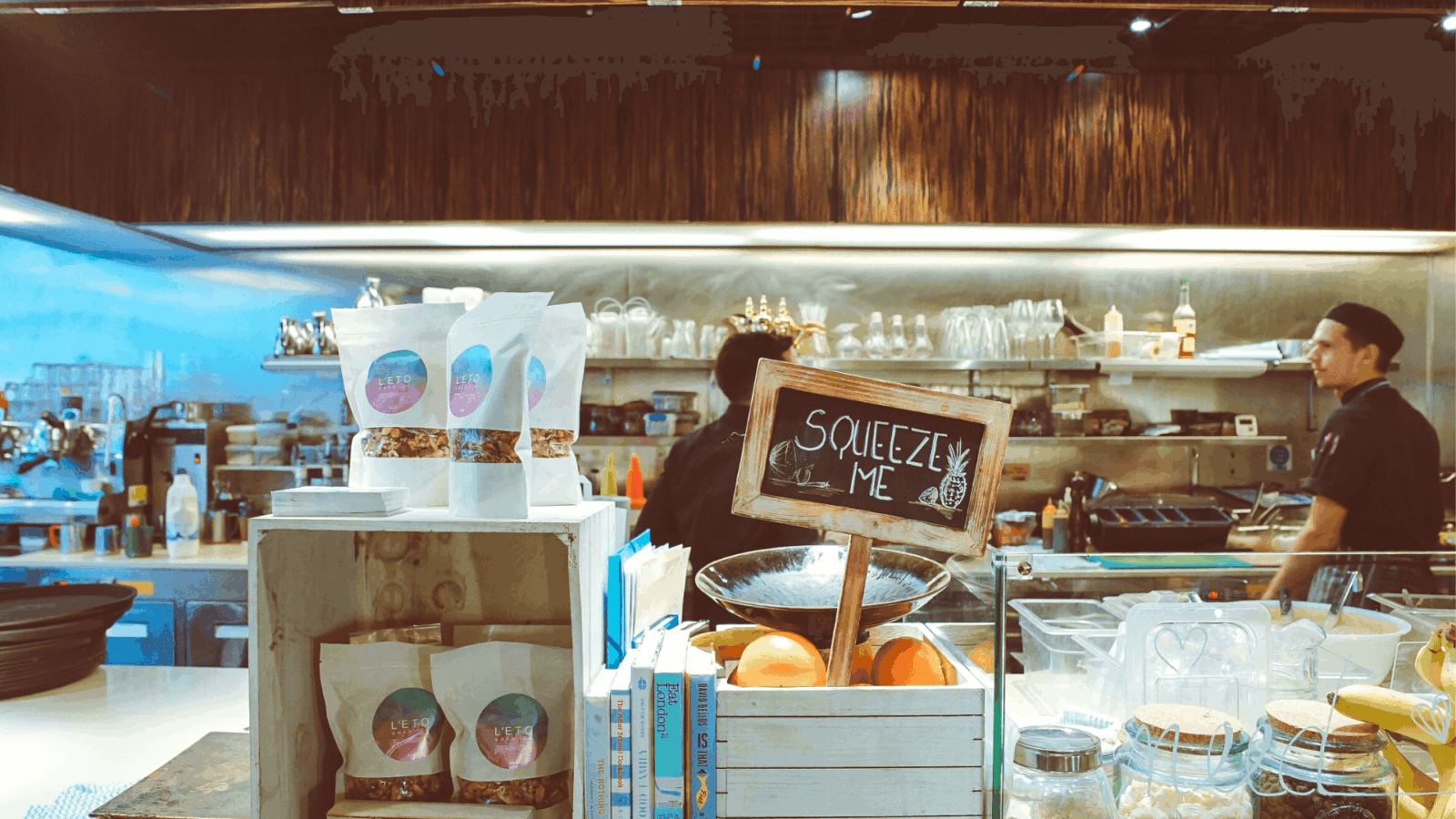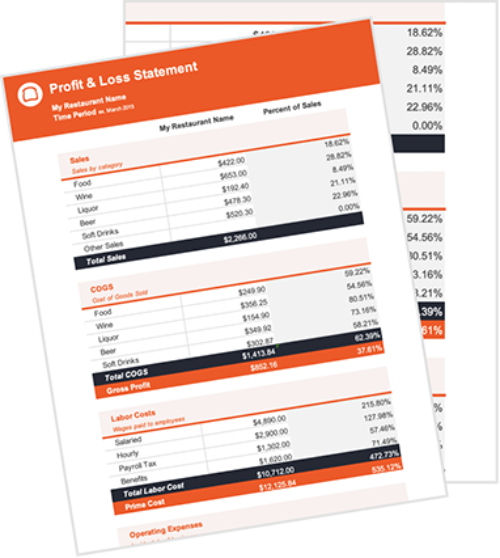Article
How to Move on from Restaurant Inventory Management in Excel

Excel simply isn’t enough for modern restaurant inventory management. Learn why your inventory spreadsheets are likely hindering your inventory control.
Restaurant inventory management with Excel takes too much time and can cost you money.
Accurate and repeatable inventory tracking is a must. Restaurants rely on inventory control to order the exact amount of goods that enable them to meet customer demands while avoiding food waste and monitoring costs.
Excel is simply not the tool for capturing and analyzing your restaurant inventory data — especially as your business grows. It’s not that Excel is bad; it’s an incredibly powerful tool, but it introduces a lot of restaurant-specific errors that can prevent you from getting clean data, accurate orders, and actionable costing insights.
Read on to see why restaurant inventory management with Excel doesn’t work. You’ll learn why it’s critical for you to adopt a restaurant inventory system that can increase accuracy while decreasing headaches.
RESOURCE
Simple guidance to demystify your finances
By requesting a demo, you agree to receive automated text messages from Toast. We’ll handle your info according to our privacy statement. Additional information for California residents available here.
Manual restaurant inventory management with Excel
Managing restaurant inventory with Excel is cumbersome. Operators, managers, and employees typically use paper printouts to manually record product quantities based on differing units of measurement (UOMs).
Right away, this process introduces tons of human error into inventorying. You must trust that the designated employee is counting correctly, recording those counts in the proper place, and in the right unit of measure.
After counts have been completed, the data is transferred to a master spreadsheet to calculate the value of on-hand inventory, assess par levels, and determine upcoming purchase orders.
Ordering to par also becomes difficult when you can’t trust current inventory levels. This can result in placing orders at the wrong time, which can cause restaurant food waste or allow you to run out of key ingredients and deliver poor customer experiences.
Overall, business and buying decisions made based on restaurant inventory management using Excel can be misguided because they’re based on incorrect data. Clearly, restaurant operators like yourself could—and should—benefit from a better approach to restaurant inventory management.
Pitfalls of manually conducting Unit of Measure conversions
UOMs appear on vendor invoices and vary widely depending on what you purchase and from whom.
It’s important to identify them on count sheets and the inventory management Excel sheet from the start to avoid confusion and get more accurate count numbers.
Differing units of measurement introduce big opportunities for inaccuracy when calculating inventory values. Vendors can sell items in whatever quantities they want; it’s up to you to convert them to the units you’ll use for recipes and sell to customers.
For example, the count is the quantity of stock available within your restaurant’s UOM for that item. If you have two pounds of beef in inventory but sell it by the ounce, your count number would be 32—since there are 16 ounces in each pound.
Unless every single count and conversion is correct, unit of measurement conversions lead to errors. This in turn leads to inaccurate numbers as you analyze your count sheets.
Inaccurate inventory data reverberates throughout your costing analysis
The Excel inventory management processes described above don’t even take fluctuating ingredient prices into account.
You and your team are likely recording prices for the items from the first time they appeared on your inventory count sheet. Unless you have access to real-time data for prices from each of your vendors, you’re calculating cost based on old data.
Inaccurate data means you can’t properly manage your COGS and control profit margins.
And if you can’t do that, how are you going to stay informed of your overall profitability while drilling into which recipes and plates are moving the needle?
Restaurant-specific inventory management software
Restaurant inventory management software can help eliminate the human and data-related errors created by Excel inventory management.
These restaurant-specific tools eliminate the need for paper-based processes. They simplify inventory counting, analyzing, and order so that you can spend more time on the big picture, such as creating a restaurant marketing plan, developing seasonal menus, or launching your next concept.
But not all restaurant inventory management systems are created equal — nor is any one inventory system going to be a fix-all for your operation.
Start with a strong foundation and build up from there
Restaurant inventory management systems are complex combinations of technology. As such, they require care and diligence for users to get the most out of the feature sets.
The foundation of restaurant inventory is accurate invoice line-item data, including vendor, product / ingredient, quantity (in UoM), and the price / price per unit.
Consistently capturing this critical data from each new invoice is essential to building an insightful restaurant inventory process.
This is why xtraCHEF by Toast is built on invoice processing automation. It automatically digitizes, extracts, and codes line-item data from invoices using machine learning and machine vision.
The real-time invoice data seamlessly flows into our inventory management tools, ensuring the value of inventory counts always reflect updated pricing. You can choose to apply the average purchase price of an item, its latest purchase price, or an average of the prices over the past 3, 6, or 12 months.
As a result, you unlock precise COGS reports that can even drill into individual recipe and plate costs. All this is designed to help you make more informed costing and pricing decisions, such as when specific items need a price bump, a cheaper ingredient subbed in, or to be pulled entirely until costs come down.
A restaurant inventory system designed for finance and operations
xtraCHEF uses the data gathered from digitized invoices to automatically create an all-encompassing product catalog, showing you every item you’ve ever purchased along with the price trend for each of those items.
These product catalogs allow you and your team to build count sheets with ease.
They also help you maintain par so you can always meet demand without carrying too much stock. Simply set your par levels for each item during the first time you take inventory with the software, and it will automatically create order guides based on what you need. You can then send those orders directly to your vendor reps within the platform.
Taking inventory doesn’t have to be such a headache for you or your finance and operations teams. xtraCHEF is built with automation and efficiency that satisfies all parties.
It’s time to stop using spreadsheets and modernize your inventory processes.
Get xtraCHEF by Toast in your kitchen by requesting a demo with one of our Product Specialists. They’ll walk you through our invoice-powered platform, showcase the added benefits of a Toast POS integration, and give you a snapshot of how the full platform can help you control costs and maximize profitability.
RESOURCE
Hack your restaurant's menu using data & psychology
By requesting a demo, you agree to receive automated text messages from Toast. We’ll handle your info according to our privacy statement. Additional information for California residents available here.
DISCLAIMER: This information is provided for general informational purposes only, and publication does not constitute an endorsement. Toast does not warrant the accuracy or completeness of any information, text, graphics, links, or other items contained within this content. Toast does not guarantee you will achieve any specific results if you follow any advice herein. It may be advisable for you to consult with a professional such as a lawyer, accountant, or business advisor for advice specific to your situation.

